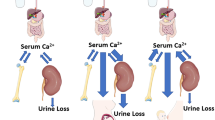Abstract
Summary
The etiology and underlying mechanisms of pregnancy-associated osteoporosis (PAO) are still unknown, since no systematic analyses exist. Our results indicate that PAO is a heterogeneous, rare but severe disease including a substantial number of fractures with a significant delay from first symptom to diagnose.
Introduction
Pregnancy-associated osteoporosis (PAO) is a rare but severe type of premenopausal osteoporosis. Most common symptom includes acute lower back pain due to vertebral fracture predominantly occurring in the last trimester of pregnancy or immediately postpartum. The exact underlining mechanisms and risk factors of PAO are still unknown, and up to date, there are no published systematic analyses.
Methods
We identified 102 PAO patients and matched them with 102 healthy controls according to age, region, and gravidity to evaluate risk factors in a large and homogenous population of women.
Results
The baseline characteristics and anthropometric data of the two study groups were similar. Eighty-eight percent of the patients with PAO suffered from one or more fractures with a mean of 3.3 fractures per patient. The most common fracture site was the thoracolumbar spine, whereas 29, 37, 48, and 35% of the patients reported fractures at TH11, TH12, L1, and L2, respectively. PAO patients suffered more frequently from excessive dental problems in childhood (p < 0.001). The control group performed significantly more frequently sports both before (p < 0.002) and after puberty (p < 0.01). Compared to the controls, the patients with PAO reported twice as often severe diseases during pregnancy (p < 0.029). Hereby, the frequency of immobilization was twice as often in the PAO group compared to that in the control group (p < 0.005).
Conclusions
Our results indicate that PAO is a heterogeneous, rare but severe disease including a substantial number of fractures with a significant delay from first symptom to diagnose. Increased awareness is warranted to immediately start effective treatment.

Similar content being viewed by others
References
Kovacs CS (2014) Osteoporosis presenting in pregnancy, puerperium, and lactation. Curr Opin Endocrinol Diabetes Obes 21(6):468–475
Stride PJ, Patel N, Kingston D (2013) The history of osteoporosis: why do Egyptian mummies have porotic bones? J R Coll Physicians Edinb 43(3):254–261
Ferrari S, Bianchi ML, Eisman JA, Foldes AJ, Adami S, Wahl DA et al (2012) Osteoporosis in young adults: pathophysiology, diagnosis, and management. Osteoporos Int 23(12):2735–2748
Winarno AS, Kyvernitakis I, Hadji P (2014) Successful treatment of 1-34 parathyroid hormone (PTH) after failure of bisphosphonate therapy in a complex case of pregnancy associated osteoporosis and multiple fractures. Z Geburtshilfe Neonatol 218(4):171–173
Smith R, Stevenson JC, Winearls CG, Woods CG, Wordsworth BP (1985) Osteoporosis of pregnancy. Lancet 1(8439):1178–1180
Kovacs CS, Ralston SH (2015) Presentation and management of osteoporosis presenting in association with pregnancy or lactation. Osteoporos Int 26(9):2223–2241
Campos-Obando N, Oei L, Hoefsloot LH, Kiewiet RM, Klaver CC, Simon ME et al (2014) Osteoporotic vertebral fractures during pregnancy: be aware of a potential underlying genetic cause. J Clin Endocrinol Metab 99(4):1107–1111
Khastgir G, Studd JW, King H, Abdalla H, Jones J, Carter G et al (1996) Changes in bone density and biochemical markers of bone turnover in pregnancy-associated osteoporosis. Br J Obstet Gynaecol 103(7):716–718
Kovacs CS (2001) Calcium and bone metabolism in pregnancy and lactation. J Clin Endocrinol Metab 86(6):2344–2348
Kovacs CS (2012) The role of vitamin D in pregnancy and lactation: insights from animal models and clinical studies. Annu Rev Nutr 32:97–123
Hellmeyer L, Hahn B, Fischer C, Hars O, Boekhoff J, Maier J et al (2015) Quantitative ultrasonometry during pregnancy and lactation: a longitudinal study. Osteoporos Int 26(3):1147–1154
Hellmeyer L, Boekhoff J, Hadji P (2010) Treatment with teriparatide in a patient with pregnancy-associated osteoporosis. Gynecol Endocrinol 26(10):725–728
Nakamura Y, Kamimura M, Ikegami S, Mukaiyama K, Komatsu M, Uchiyama S et al (2015) A case series of pregnancy- and lactation-associated osteoporosis and a review of the literature. Ther Clin Risk Manag 11:1361–1365
Alexandre C, Vico L (2011) Pathophysiology of bone loss in disuse osteoporosis. Joint Bone Spine 78(6):572–576
Nikander R, Sievanen H, Heinonen A, Daly RM, Uusi-Rasi K, Kannus P (2010) Targeted exercise against osteoporosis: a systematic review and meta-analysis for optimising bone strength throughout life. BMC Med 8:47
Dahlman TC (1993) Osteoporotic fractures and the recurrence of thromboembolism during pregnancy and the puerperium in 184 women undergoing thromboprophylaxis with heparin. Am J Obstet Gynecol 168(4):1265–1270
Pfeilschifter J (2015) Diagnosing osteoporosis: what is new in the 2014 DVO guideline? Dtsch Med Wochenschr 140(22):1667–1671
Drozdzowska B, Pluskiewicz W, Michno M (2006) Tooth count in elderly women in relation to their skeletal status. Maturitas 55(2):126–131
Ondrak KS, Morgan DW (2007) Physical activity, calcium intake and bone health in children and adolescents. Sports Med 37(7):587–600
Tsvetov G, Levy S, Benbassat C, Shraga-Slutzky I, Hirsch D (2014) Influence of number of deliveries and total breast-feeding time on bone mineral density in premenopausal and young postmenopausal women. Maturitas 77(3):249–254
Khovidhunkit W, Epstein S (1996) Osteoporosis in pregnancy. Osteoporos Int 6(5):345–354
Smith R, Athanasou NA, Ostlere SJ, Vipond SE (1995) Pregnancy-associated osteoporosis. QJM 88(12):865–878
Di Gregorio S, Danilowicz K, Rubin Z, Mautalen C (2000) Osteoporosis with vertebral fractures associated with pregnancy and lactation. Nutrition 16(11–12):1052–1055
Peris P, Guanabens N, Monegal A, Pons F, Martinez de Osaba MJ, Ros I et al (2002) Pregnancy associated osteoporosis: the familial effect. Clin Exp Rheumatol 20(5):697–700
Author information
Authors and Affiliations
Corresponding author
Ethics declarations
The local ethics committee of the Philipps-University of Marburg approved the study. All patients provided written informed consent prior to participation according to the declaration of Helsinki and the German law.
Conflicts of interest
None.
Rights and permissions
About this article
Cite this article
Hadji, P., Boekhoff, J., Hahn, M. et al. Pregnancy-associated osteoporosis: a case-control study. Osteoporos Int 28, 1393–1399 (2017). https://doi.org/10.1007/s00198-016-3897-8
Received:
Accepted:
Published:
Issue Date:
DOI: https://doi.org/10.1007/s00198-016-3897-8




